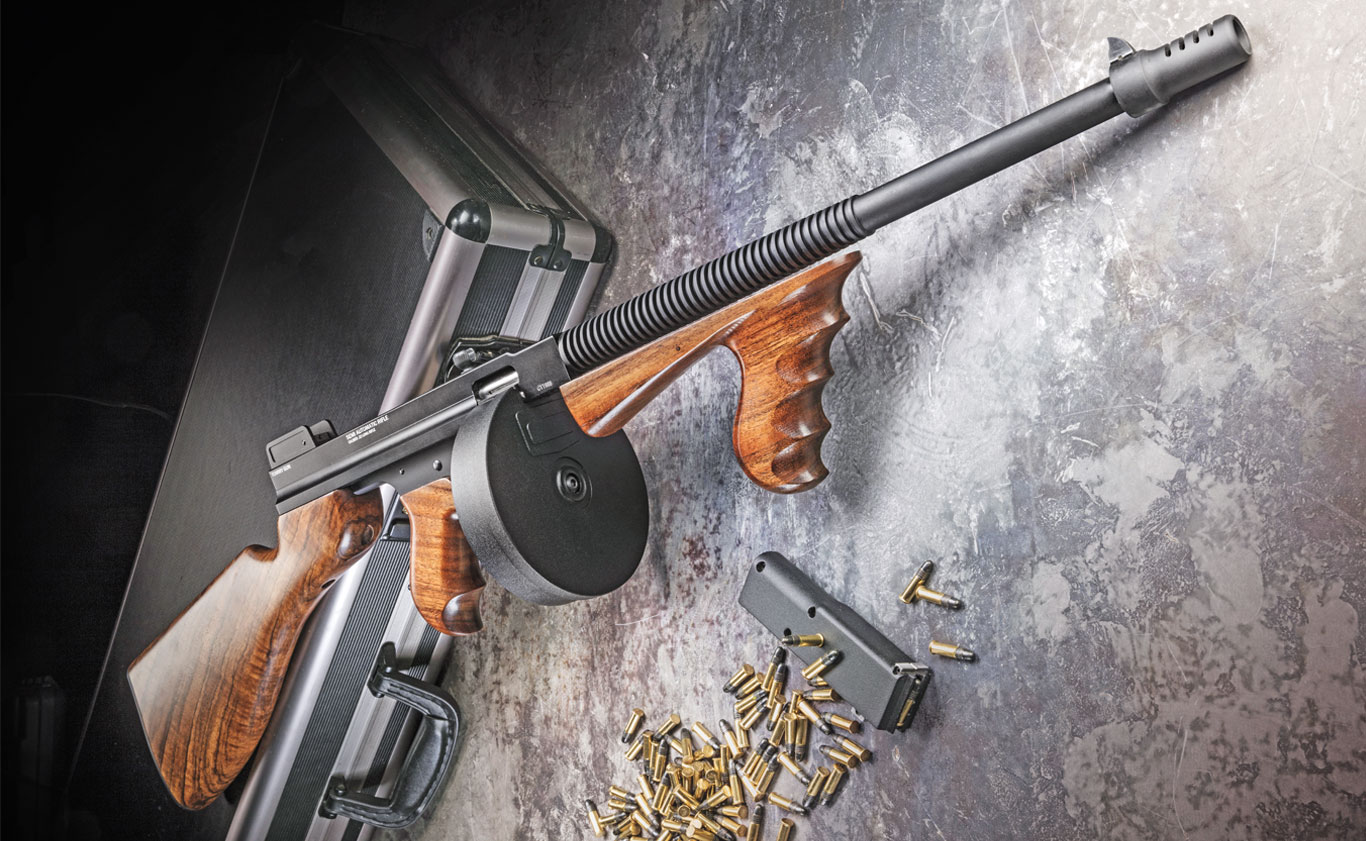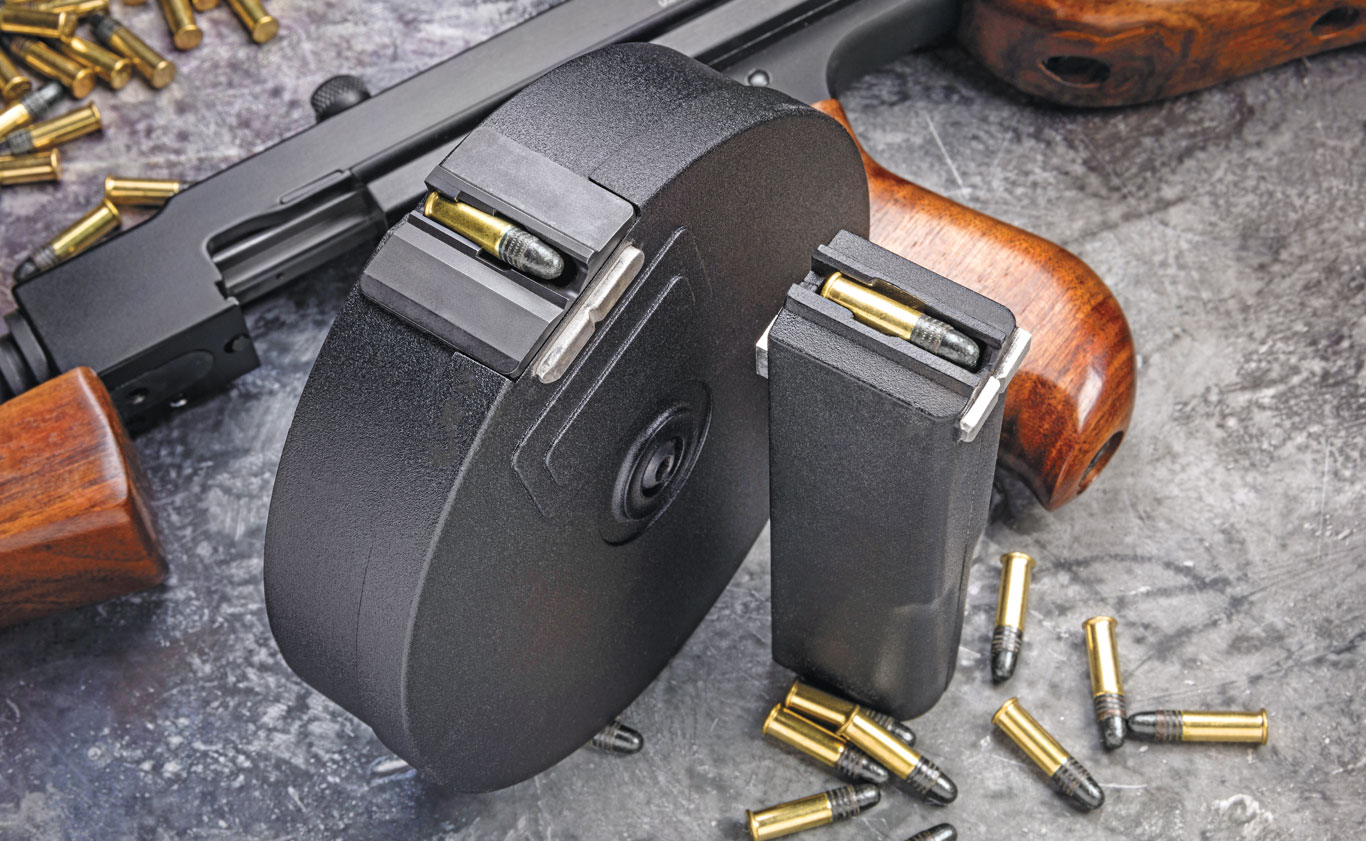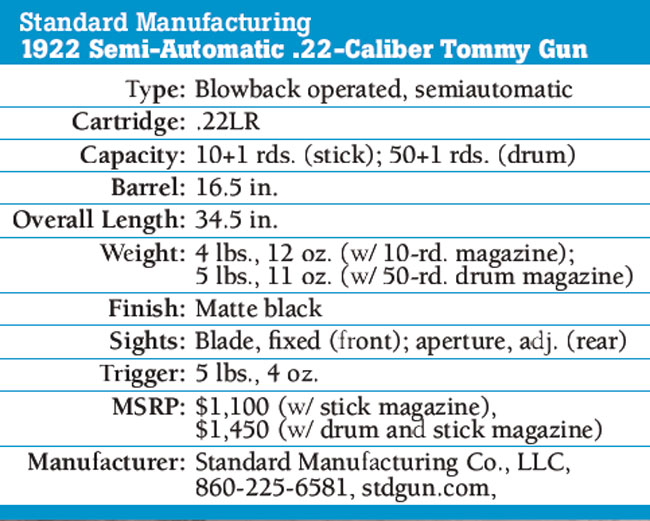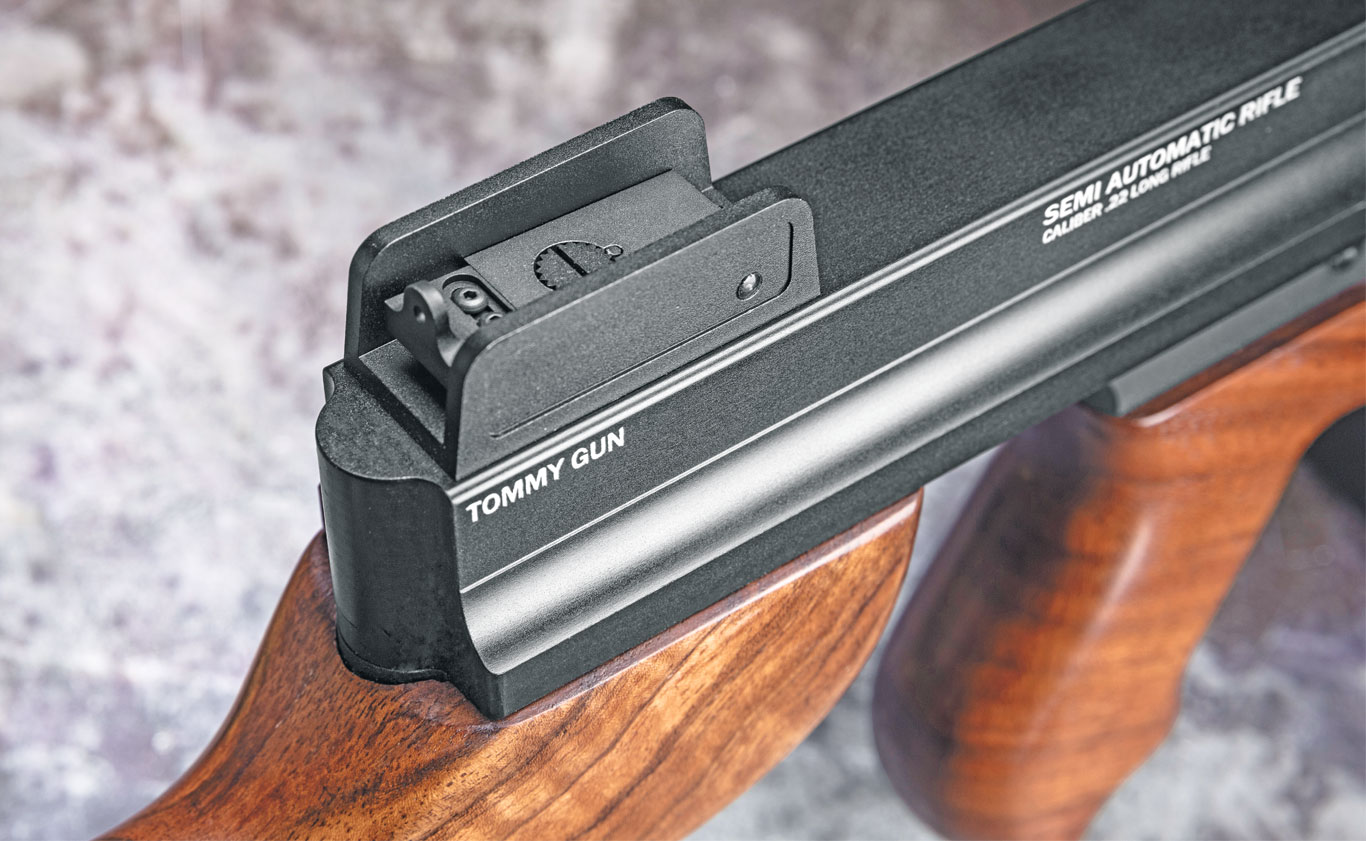
The Standard Manufacturing 1922 .22-Caliber Tommy Gun is high-volume plinking fun.
It’s about half the scale of a real Thompson Model 1921 submachine gun that it mimics. If you’ve ever shot an original “Tommy Gun” or owned one of Auto-Ordnance’s M1927A1 semiautos, it could be argued that the best reason to own one that fires .22LR is that it doesn’t require a fortune to shoot. It’s all about having fun — and what fun it is.

There are other benefits to owning a Standard Manufacturing Model 1922, as well. For example, the receiver is made from aluminum, which means that there is considerable weight savings as compared to a similarly configured .45-caliber Tommy Gun. (The last we checked, an M1928A1 or semiauto from Auto Ordnance averaged near 11 pounds. This scaled-down rimfire weighs half of those, which makes it more endearing to shoot.

Different, also, is that the Standard Manufacturing 1922 operates using a blowback action that contains a semicircular bolt. There is a large extractor and fixed ejector. Since rimfire ammunition varies greatly in pressures and velocities, building a gun that effectively cycles a range of ammunition deserves credit be given to engineering, especially when having to work another firearm’s appearance and ergonomics. In our hands, this .22 Tommy ate everything it was fed from both the 10-round stick magazine or optional 50-round drum magazine.
Predictably, Standard’s 1922 worked with standard and high-velocity loads. The real challenge was the lower-velocity benchrest loads that don’t break 1,000 feet per second (fps). If a gun cycles light target loads — in my case Lapua and Eley’s match loads — it will cycle anything found in a gun store.

The Thompson’s design is actually comfortable and stable to shoot. It helps to have the

